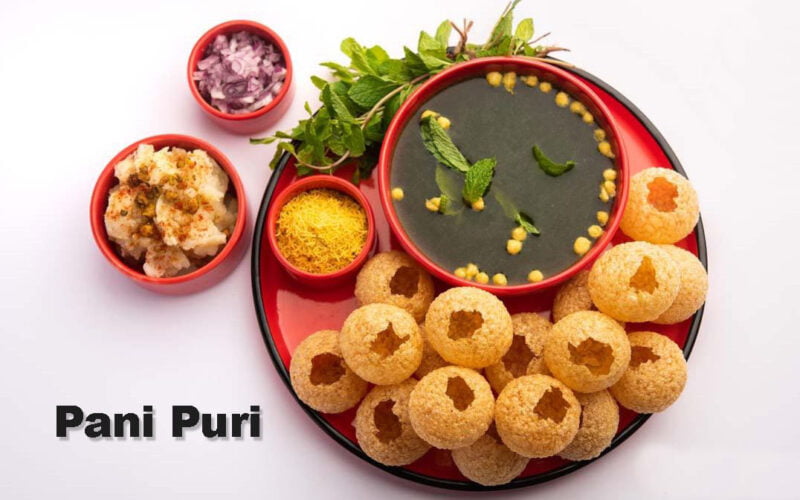
Pani Puri, also known as Golgappa or Puchka in different regions of India, is a popular street food that has captured the hearts and taste buds of millions. It is a quintessential Indian snack that exemplifies the country’s diverse culinary heritage. This savory and tangy dish consists of hollow, crispy puris filled with spicy and flavorful water, along with an assortment of fillings like chickpeas, potatoes, and tamarind chutney. Pani Puri is not just a snack; it’s an experience that brings people together to savor the burst of flavors and the joy it brings.
Pani Puri traces its roots back to the Indian subcontinent, with its origins believed to lie in the region of Northern India, specifically in the states of Uttar Pradesh and Bihar. The dish has undergone various adaptations over the centuries, and today, it has become an inseparable part of Indian street food culture. From bustling cities to small towns, Pani Puri stalls can be found on almost every street corner, offering a delightful respite from the scorching heat and a burst of taste like no other.
The magic of Pani Puri’s lies in the harmonious blend of its components. Let’s break down the process of creating this delectable treat:
Puris are small, hollow, and round crisps made from semolina or wheat flour. They are deep-fried to perfection, resulting in a light and crunchy texture. The puris should be delicate enough to be easily pierced with a thumb, allowing enough space for the filling and the spicy water.
The star of the show is undoubtedly the Pani, the tangy and spicy water that gives Pani Puri its distinctive taste. The water is a melange of tamarind, mint, coriander, green chilies, black salt, cumin, and other aromatic spices. It is essential to strike the right balance between tanginess, spiciness, and sweetness to elevate the taste.
The filling is what completes the Pani Puri experience. Traditional fillings include boiled potatoes, chickpeas, chopped onions, and sprouted moong beans. The burst of flavors and textures from the fillings adds depth to every bite.
The popularity of Pani Puri’s has led to various regional adaptations. Each region in India puts its own twist on this beloved street food. Here are a few regional variations of Pani Puri:
In Mumbai, it is often called Ragda. Ragda refers to a spicy and tangy white peas curry that replaces the traditional filling. The combination of Ragda and the spicy water creates a unique and mouthwatering flavor.
Kolkata’s take on Pani Puri’s is called Puchka. It features a lighter and sweeter Pani with a touch of jaggery, which distinguishes it from the spicier versions found elsewhere.
Delhi’s variation of Pani Puri’s involves adding a generous dollop of creamy yogurt to the traditional filling, creating a delightful blend of flavors and textures.
Part of the charm is the interactive experience of assembling and consuming it. Here’s how to enjoy this iconic street food:
Creating it at home can be a fun and rewarding experience. While it may seem intimidating, it’s relatively simple with the right ingredients and preparation. Here’s a step-by-step guide to making it at home:
A: Absolutely! You can control the spiciness by adjusting the number of green chilies and black salt to suit your taste preferences.
A: While street food is delicious, it’s essential to be cautious about the hygiene and quality of the ingredients. Opt for reputable vendors to minimize health risks.
A: Yes, you can make gluten-free by using gluten-free flours to prepare the puris.
A: You can get creative with the fillings! Some alternatives include boiled moong dal, sprouted moong beans, or even crunchy boondi.
A: Yes, it is a vegetarian delight, making it an ideal choice for vegetarians and vegans alike.
A: While the Pani is best consumed fresh, you can refrigerate it for a few hours. However, it’s recommended to consume it on the same day for the best taste.
Pani Puri is not just a dish; it’s a culinary adventure that encapsulates the essence of Indian street food. From its humble origins to the numerous regional variations, it has transcended geographical boundaries and become a symbol of India’s rich food culture. Whether you’re enjoying it from a street vendor or trying your hand at making it at home, it promises an explosion of flavors that will leave you craving for more.
Recommended other topics: Dark Matter Coffee-Unique and Flavorful Experience










© InfoDoot. All Rights Reserved.